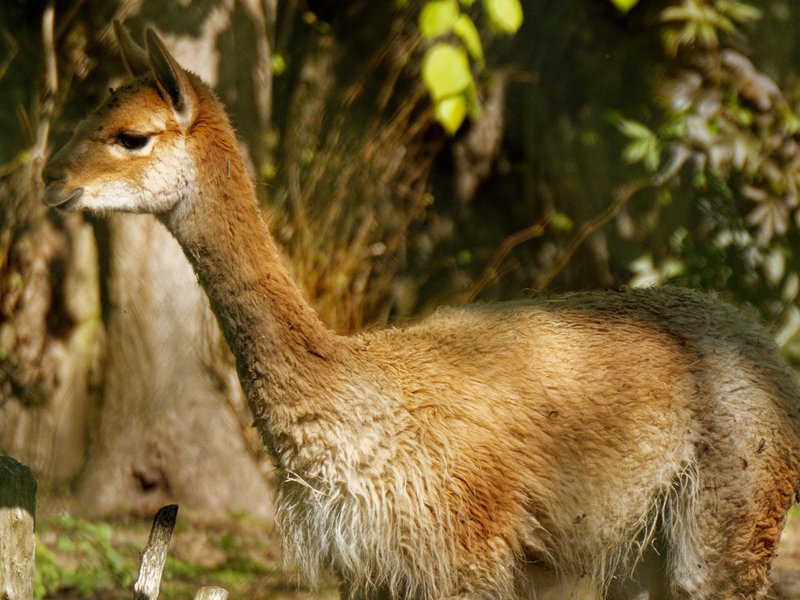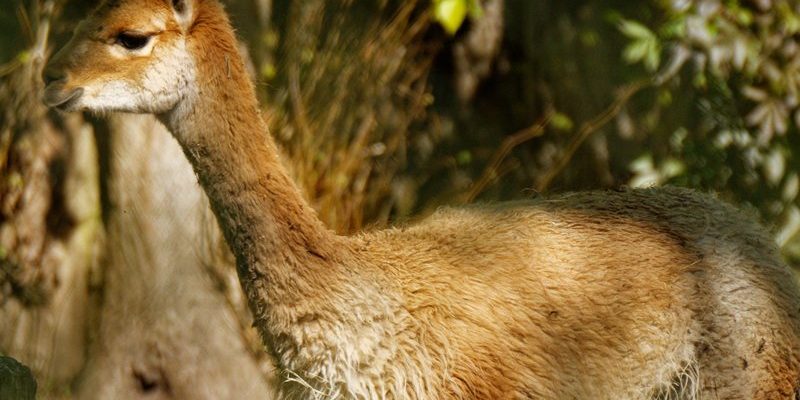
Let’s dive into the world of the vicuna and its look-alikes. Knowing these animals can enhance your appreciation of biodiversity and help you identify them on your travels or in documentaries. So, grab your favorite drink, and let’s explore this fascinating topic together!
1. Alpaca
The **alpaca** is probably the closest relative to the vicuna you’ll find. Both belong to the camelid family and share a lot of physical characteristics. Alpacas are typically a bit bulkier and have a thicker coat, which makes them look fluffier. While vicunas are usually tan or light brown, alpacas come in a range of colors, including white, black, and various shades of brown.
Here’s the thing: alpacas are domesticated animals often raised for their wool. This means they’re generally more accustomed to human interaction than vicunas, which are wild. If you ever visit a farm, you’ll notice how friendly and social alpacas can be, eagerly approaching visitors for a treat or a scratch behind the ears.
2. Guanaco
Next up is the **guanaco**, another camelid that shares its habitat with the vicuna in South America. Guanacos are slightly larger and are often found at lower altitudes compared to vicunas. Their coats are also similar in color, usually a sandy brown, but they have a distinctive white underbelly.
One way to tell them apart is by their posture. Guanacos tend to stand tall and proud with a more robust frame, while vicunas are more slender and graceful. If you see a group of these animals in the wild, you might notice that guanacos are more social, often seen in family groups, while vicunas prefer to roam alone or in small groups.
3. Llama
The **llama** is another relative that often gets confused with vicunas. Llamas are larger and have a more pronounced face, with longer legs and a heavier build. Their wool is also thicker and coarser compared to that of vicunas.
You might be wondering how to spot a llama in a crowd. Look for their long necks and the way they carry themselves—llamas are known for their confident demeanor. Plus, they often have a quirky, expressive face, making them hard to miss! Unlike the shy nature of vicunas, llamas are often used as pack animals and can be quite friendly toward humans.
4. Patagonian Mara
Let’s take a leap away from the camelids for a moment and talk about the **Patagonian mara**. This unique animal is a large rodent native to Argentina. While it might look significantly different from the vicuna, it shares similar habitats in the grasslands of Patagonia.
Patagonian maras have a distinct look with long legs and a graceful body, but they’re much shorter than vicunas. If you see one, you might mistake it for an oversized rabbit at first glance. They’re social creatures, often seen in pairs or small groups, unlike the more solitary vicuna. Their striking fur patterns—ranging from light to dark brown—also set them apart.
5. Southern Tammar Wallaby
The **southern tammar wallaby** might be a surprising addition to this list, but hear me out. These small marsupials from Australia have a similar physique to the vicuna, especially when it comes to their long legs and slender build.
You might notice their unique hopping style as they move gracefully across their habitat. While they live in vastly different environments, the combination of their body shape and fur color can remind one of a smaller, more compact version of the vicuna. If you see them side by side, their size difference is quite obvious, but the resemblance in their sleek look can be striking.
6. Cavy
The **cavy**, or guineapig, is another small mammal that shares some similarities with the vicuna, especially in terms of size and body shape. Cavies are often kept as pets and have a compact, rounded body.
While they’re much smaller and more rounded than vicunas, their soft fur and social behavior make them somewhat reminiscent. You’re likely to find cavies in various colors, giving them a variety of looks. If you ever observe a group of cavies, you’ll see how they interact, often huddling together, which is quite different from the solitary nature of vicunas.
7. Andean Fox
Moving on to a different category, the **Andean fox** is a wild canid found in the same regions as the vicuna. Although they don’t resemble vicunas as closely in body shape, their presence in the Andean ecosystem makes them noteworthy.
Andean foxes have pointed ears and a bushy tail, and their fur color can range from grayish to reddish-brown. They often hunt in pairs or small family units, differing from the more solitary life of a vicuna. If you’re hiking in the mountains and spot one, you’ll likely appreciate the contrast between the elegant vicuna grazing and the more agile fox scouting for food.
8. Highland Cow
Let’s take a trip to Scotland to meet the **highland cow**. This breed of rustic cattle has a distinctive long-haired coat that might remind you of a vicuna’s soft wool. Highland cows have a stocky build compared to the slender vicuna.
What sets them apart is their long horns and massive frame. If you see one, you might be struck by their calm demeanor and friendly nature. They thrive in cooler climates, grazing peacefully, much like vicunas do in the Andes, so they share a certain ambiance of country life.
9. Sika Deer
The **sika deer** might not initially seem similar to a vicuna, but both animals are medium-sized and exhibit grace in their movements. Sika deer have spotted coats, typically varying from reddish to gray, which helps them blend into their forested environments.
If you ever spot one in the wild, pay attention to its nimble legs and slender profile. These deer are social animals and often travel in herds, unlike the more solitary vicuna. Their natural habitat contrasts with the Andean mountains, but there’s an elegance in both animals’ movements that draws similarities.
10. Marsh Deer
Last but not least, the **marsh deer** is another deer species known for its long legs and slender frame, similar to that of the vicuna. Native to South America, particularly in wetlands, marsh deer have a less defined color pattern than vicunas.
These deer are known for their aquatic habits, often found near water sources. If you’re lucky enough to spot them in the wild, you might notice their graceful way of navigating through lush vegetation, much like how vicunas elegantly move across rocky terrains. Their different environments make them unique, but the similarities in their body shapes can be quite noticeable.
In conclusion, the vicuna is part of a fascinating family of animals, some closer relatives and others more distant. Whether you’re hiking in the Andes or just enjoying a nature documentary at home, keeping an eye out for these animals can deepen your appreciation for the diversity of wildlife. Each one has its unique charm, yet they all share the same vibrant ecosystems that make our planet so special. So next time you see a vicuna—or one of its look-alikes—take a moment to appreciate the beauty in their differences and similarities!

